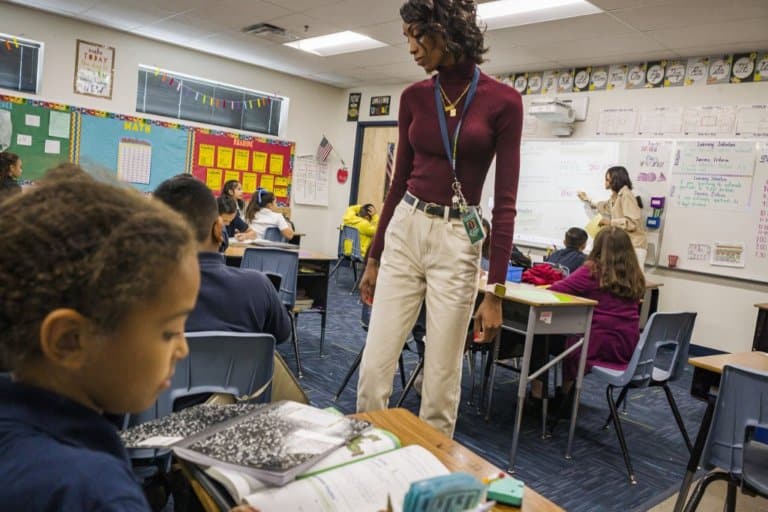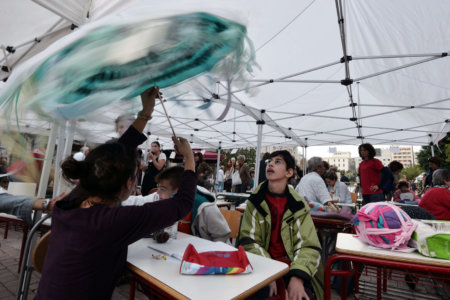
Like many students entering uni, I wasn’t entirely sure of what I wanted to do next — so I began considering where my passion lies.
Having taught English during one summer, I had caught the teaching bug.
I knew I enjoyed working with students and equipping others with the knowledge and skills that would help them in the future.
However, being in Malaysia, I wasn’t sure what my options were for exploring this passion.
The first step was distinguishing the difference between TESL, TEFL and TESOL. While there are many variations of the name, they all ultimately lead to one career: teaching English.
So, I began researching to find a programme available in Malaysia to pursue this path.
That was when I came across the Bachelor of Education in Teaching English as a Second Language (TESL) at HELP University, one of the top unis in the nation to pursue a TESL degree.
Entering the course, though, I did not know much, so I had no idea what to expect.
Little wonder why many aspects of the course caught me by surprise. Here are eight that stood out to me the most:

On my graduation day, that was delayed by two years due to the pandemic. Source: Ashreena Kaur
A TESL degree is not just about English
One of the biggest misconceptions about a TESL degree — one that I had myself — is that you will be learning English.
If it were just about how you are with the language, many would be able to pursue this course.
What the course is actually about is right in its name: teaching.
While the degree relates to English, it ultimately focuses on different things.
During my degree, I took subjects related to general language teaching methodologies, curriculum design and language testing and evaluation.
I learnt how to plan and deliver lessons, apply classroom management techniques, create assessments, provide constructive feedback and many more.
While the focus is on teaching, a TESL degree is much more than that. The uni did teach other relevant subjects like philosophy and psychology.
At its core, the degree will make you ask yourself: What makes me a good teacher?”
An “easy” degree
If only I got a penny whenever someone said, “TESL is an easy course.”
While I did not have to memorise the human anatomy or understand the production and manufacturing of products through chemical processes, a TESL degree was no walk in the park.
There were more materials than I had anticipated. Pair that with tight deadlines, and my nerves started to kick in.
If you are considering pursuing a TESL degree, be prepared to learn phonetics, grammar, literature, and how to effectively design and deliver a curriculum through several teaching styles and strategies.
You probably think this isn’t necessary — especially if you are a native English speaker. Unfortunately, in this case, having the gift of the gab or the ability to write well will not prepare you to be a skilled instructor.
Teaching a subject requires a unique skill set; the same goes for teaching English. This is especially true when teaching non-native speakers, as you will need the skills and a lot of patience.
The common misconception is that a TESL degree will improve your English language skills. While that is true to a certain extent, having a solid foundation in grammar, reading, writing, listening, and speaking is essential before enrolling.
There are endless career possibilities
“A TESL degree is only useful for becoming a teacher.”
This could not be further from the truth.
Though focused on teaching, the degree does not limit you to that. Having this degree in hand opens the door to many opportunities.
Whether your passion lies in public speaking or you prefer working behind the scenes, many job opportunities are available.
These roles include becoming a writer, translator, social media manager, editor, sales representative, public relations, customer representative, and many more.
After exploring a career in teaching for two years, I decided to take on a role as a writer. Thankfully, the communication, analytical and soft skills I acquired during my degree equipped me to embark on this new journey.
Came out of my shell
As a teacher standing at the front of the classroom with a sea of eyes staring at you, you really had to be the most confident person in the room.
You are expected to be an expert on the subject and be ready to answer any question that comes your way.
That requires a level of self-confidence — something I lacked when I started my TESL degree.
Heading into the course, I was a shy, introverted young student.
I remember the first time I had to do a mock lesson in my first semester. I lost my voice, sweat started building up, and I thought of running out of that classroom.
Three years later, I could stand in front of a classroom full of students with a strong, loud voice I never thought I had and be able to control the room.
It’s all thanks to the constant practice of mock lessons and vocal training.

As part of the programme, I learnt different techniques to teach students with special needs. Source: Louisa Gouliamaki/AFP
Learning to handle children with special needs
During my second year in the course, the elective “Teaching Children with Special Needs” was offered. Eager to expand my knowledge and skills, I decided to take this on.
As part of the course, we had to learn the theories of teaching these students and were assigned to put theory to practice by teaching a student with special needs.
Despite all the knowledge I had in hand, I was not prepared for how challenging teaching children with special needs would be.
This subject gave me a newfound respect for teachers of students with special needs. They continue to show patience and perseverance to ensure their students succeed.
When engaging with children with special needs, handling challenging and emotional circumstances is expected because their abilities frequently cause them to feel irritated, hostile, lonely and despondent.
Every student learns in their own way
Like many, I had the perception that I just had to find my teaching style. I never imagined that becoming a good teacher is so much more than that.
Entering the education field, I learned that students don’t all learn the same way. Some are visual learners and need to see resources to help them learn, while others learn best through listening.
With so many different learning styles in one classroom, it is essential that your teaching style can’t be static.
The training and experience I gained from my TESL degree gave me the tools and knowledge to help me understand each student and ensure they can thrive.
This not only helped me to understand my student better, but I also got to learn more about myself.
I recognised that I am a visual learner and learn best when I picture what I am learning. Using graphs, charts, maps, diagrams, and other forms of visual stimulation works best for me.

Learning to use technology to teach English made my lessons more engaging for my students. Source: Bertrand Langlois/AFP
Incorporating technology in the classroom
Since I am not the best at technology, it was hard to incorporate tech in the classroom.
Becoming a teacher today, however, requires you to integrate different websites and apps in the classroom to take your lessons to the next level.
You might be thinking: “How am I supposed to teach English with technology?”
During my degree, I learnt how to use websites such as Kahoot, Quizziz, and Padlet.
All of which helped me when I began teaching. Using these websites helped to keep my students engaged and was extremely useful when I was teaching during the pandemic and had to conduct virtual lessons.
Discovering a range of subjects
Through a range of subjects offered in the TESL degree, I was able to explore my creativity.
One subject that stood out to me the most was children’s literature. Thinking it would be an easy elective module, I decided to take on this subject.
Little did I know that we had to create a children’s book by the end of the course — something I never thought I would be able to do.
But if there’s anything I learned about this course, it’s this: you can always challenge yourself and achieve things you never could before.










